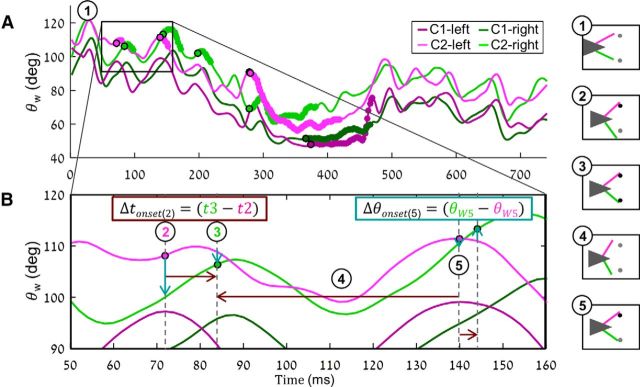Figure 2.
Measurement of sensory coding variables: Δtonset and Δθonset. A, Four whisking traces showing whisker angles (θW vs time) of left (purple) C1 (dark) and C2 (light), and right (green) C1 (dark) and C2 (light) whiskers, during task performance. Thick segments represent a contact of the relevant whisker with the pole. Black symbols represent the onset of contacts. B, Magnification of the area in A, marked with black rectangle. Filled symbols represent the onsets of contacts. Arrows indicate Δtonset (red) and Δθonset (cyan). Arrows' lengths correspond to the time elapsed between a contact and the following contralateral contact (Δtonset), or the angle difference between two homolog whiskers (Δθonset). Arrows' direction indicates the sign according to convention, by which left side values are subtracted from right sides values; thus, the left pointing arrows mark a right side lead (negative Δtonset) and down pointing arrows, a more protracted left side (negative Δθonset). Measurements of Δtonset and Δθonset are demonstrated for points 2 and 5, respectively (thick arrows, formulas). The numbered illustrations on the right demonstrate the position of rat's head (triangle) and whiskers (light purple and green lines) and the two poles during contacts (circles, black) or no contacts (gray), during the time points with the corresponding numbering on A and B.

